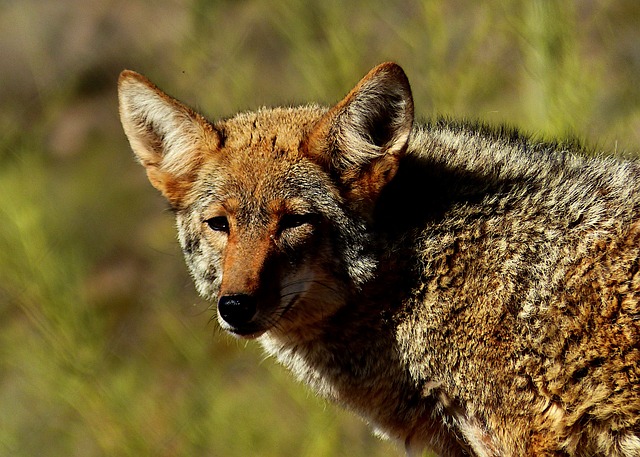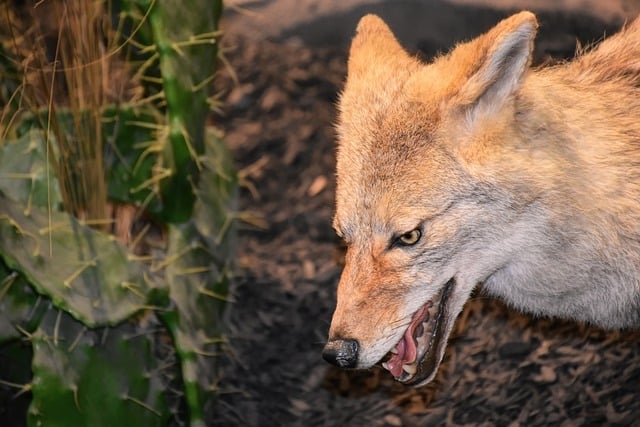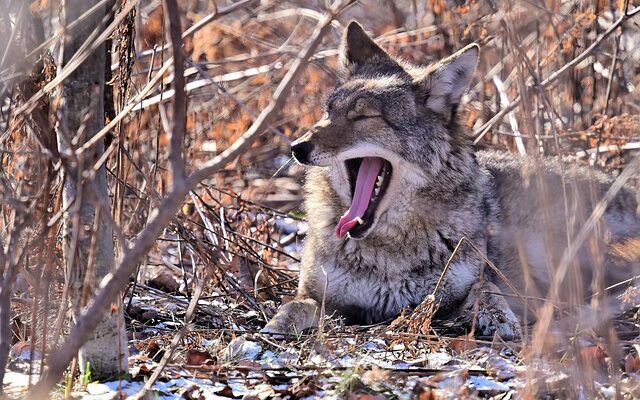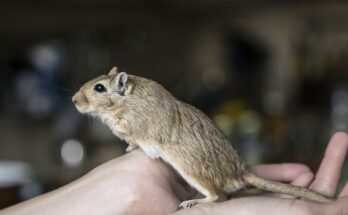Introduction:
In the intricate web of the natural world, every species is equipped with unique adaptations honed by millions of years of evolution. Among the myriad wonders of wildlife, coyotes stand out as masterful survivors, and at the heart of their survival toolkits lie their remarkable teeth. In this comprehensive exploration, we embark on a journey to unravel the mysteries of coyote teeth, delving deeper into their anatomy, function, and the fascinating adaptations that make them indispensable to the coyote’s way of life.
The Anatomy of Coyote Teeth:
Coyotes, like their canine relatives, possess a dental arrangement finely tuned to meet the demands of their omnivorous diet and predatory lifestyle. Their dentition consists of four types of teeth: incisors, canines, premolars, and molars, each meticulously designed to serve a specific purpose in their quest for sustenance and survival.
The incisors, situated at the front of the mouth, are sharp and chisel-like, perfect for grasping and tearing into flesh. These teeth play a crucial role in capturing and manipulating prey during the hunt. Flanking the incisors are the canines, often referred to as the “fangs” of the coyote. These formidable teeth are elongated and pointed, ideal for puncturing and immobilizing prey with precision.
Moving toward the back of the mouth, we encounter the premolars, which are specialized for shearing and slicing through tough materials such as meat, tendon, and plant matter. Finally, the molars, located at the rear of the jaw, are broad and flat, designed for crushing bones and grinding fibrous vegetation into digestible pulp.
Functionality in the Wild:
Coyote teeth are not merely instruments for consuming food; they are essential tools for survival in the unforgiving wilderness. Equipped with razor-sharp incisors and canines, coyotes are adept at dispatching prey swiftly and efficiently, minimizing the risk of injury to themselves.

Their robust premolars and molars enable them to process a diverse array of food sources, ranging from small rodents and birds to fruits, seeds, and carrion. This dietary flexibility allows coyotes to adapt to changing environmental conditions and exploit available resources, ensuring their survival in diverse habitats across North America.
Moreover, coyotes exhibit remarkable dental adaptations that reflect their opportunistic feeding habits. Studies have revealed that their teeth are exceptionally wear-resistant, enabling them to consume abrasive materials like bone and cartilage without suffering significant damage. This adaptation is particularly advantageous in environments where food resources are scarce, allowing coyotes to maximize nutrient intake and minimize energy expenditure.
Coyote Teeth in Folklore and Cultural Traditions:
Throughout history, coyote teeth have held a prominent place in the folklore and cultural traditions of indigenous peoples across North America. In many Native American cultures, the coyote is revered as a trickster figure, embodying cunning, resourcefulness, and adaptability.

Coyote teeth are often imbued with symbolic significance, representing strength, resilience, and spiritual power. In some traditions, they are believed to possess magical properties, offering protection against evil spirits or enhancing one’s hunting prowess. Talismans and amulets crafted from coyote teeth are treasured as symbols of connection to the natural world and reverence for the animal kingdom.
In contemporary society, coyote teeth continue to inspire awe and fascination, appearing in various forms of art, jewelry, and decorative crafts. Their enduring presence serves as a reminder of humanity’s deep-seated connection to the natural world and the importance of preserving biodiversity for future generations.
Conservation and Coexistence:
Despite their adaptability and resilience, coyotes face numerous threats in today’s rapidly changing world. Habitat loss, human encroachment, and indiscriminate hunting pose significant challenges to their survival, leading to declines in population numbers and genetic diversity.
As responsible stewards of the environment, it is incumbent upon us to promote coexistence with coyotes and other wildlife species. This involves implementing sustainable wildlife management practices, conserving critical habitat, and fostering a deeper understanding of the ecological roles that coyotes play in maintaining healthy ecosystems.
Conclusion:
Coyote teeth are not just tools for survival; they are marvels of evolution, finely crafted by nature to ensure the survival and success of one of North America’s most iconic predators. From their razor-sharp incisors to their wear-resistant molars, these remarkable teeth embody the resilience, adaptability, and cultural significance of the coyote.

As we continue to unravel the mysteries of coyote teeth, let us embrace a deeper appreciation for the wonders of the natural world. In honoring the legacy of the coyote, we reaffirm our commitment to preserving biodiversity and safeguarding the future of all species for generations to come.
Certainly!
unique features and adaptations of coyote teeth:
Let’s explore more about the unique features and adaptations of coyote teeth:
- Dental Adaptations for Varied Diets: Coyotes are opportunistic feeders, which means they consume a wide range of foods depending on availability. Their teeth reflect this dietary versatility. While their sharp incisors and canines are essential for capturing and dispatching prey, their premolars and molars are adapted for processing both animal and plant matter. This allows coyotes to thrive in different environments, from grasslands where they hunt small mammals to urban areas where they scavenge for human leftovers.
- Wear and Tear: The wear patterns on coyote teeth provide insights into their feeding behavior and age. Like other carnivores, coyotes experience dental wear from tearing through flesh and crunching bones. By examining the extent of wear on their teeth, researchers can estimate the age of individual coyotes and assess their overall health and longevity.
- Regenerative Abilities: One fascinating aspect of coyote teeth is their regenerative capacity. Like many other mammals, coyotes continuously grow their teeth throughout their lives. This growth helps compensate for the wear and tear they experience from hunting, chewing, and gnawing on various food items. The ability to replace worn or damaged teeth ensures that coyotes can maintain their hunting prowess and feeding efficiency well into old age.
- Social Significance: Coyote teeth also play a role in social interactions within coyote packs. While much of their communication relies on body language, vocalizations, and scent marking., the display of teeth can convey dominance, submission, or aggression among pack members. See more

FAQS:
Adaptation: The upper and lower cheek teeth of a Coyote, Canis latrans, are blade-like, with sharp shearing edges that cut food in scissors-like fashion. The foremost shearing teeth, known as carnassials, are clearly larger than the others.
Coyotes have quite a strong bite, generating a bite force of 88 PSI. Their narrow lower jaw usually gives off the strongest punch. Apart from their very strong jaws, what helps coyotes defeat bigger animals is their nature to hunt in packs, giving them more strength in taking down prey.
Symbolizes strength, courage and protection. Protection of the “pack” (family, community, etc.)
While you do occasionally get wolf teeth that are around an inch long, they’re going to be more robust than that coyote tooth. So any time you get a “wolf tooth” that’s an inch or smaller, chances are it’s coyote or domestic dog.
Coyotes are wild animals that are potentially dangerous, but coyote attacks against grown humans are rare. Coyotes should be avoided and treated with caution. They can be very dangerous to children and pets, but following prevention tips can keep you, your family and your pets safe.
The Orca or Killer Whale is the most prominent member of the dolphin species family and has the sharpest teeth of all animals. Orcas are predators; they are at the top of the food chain in marine life. No other animal preys on orcas; they can even hunt seals, sharks, and dolphins.
How do coyotes kill their prey? The most common kill style is a bite to the throat. Other signs you may be dealing with a coyote (assuming you actually find the body or remains) are wounds on the shoulders, flank, or hindquarters.




